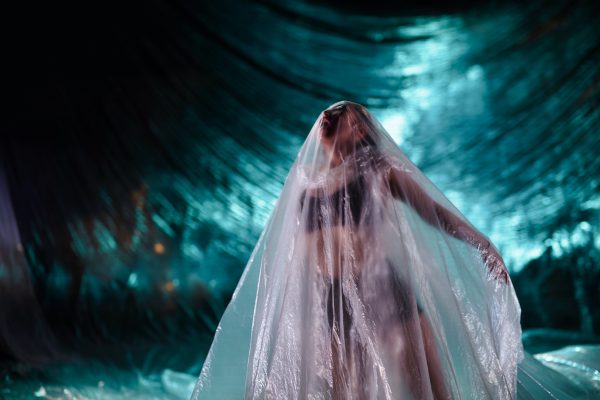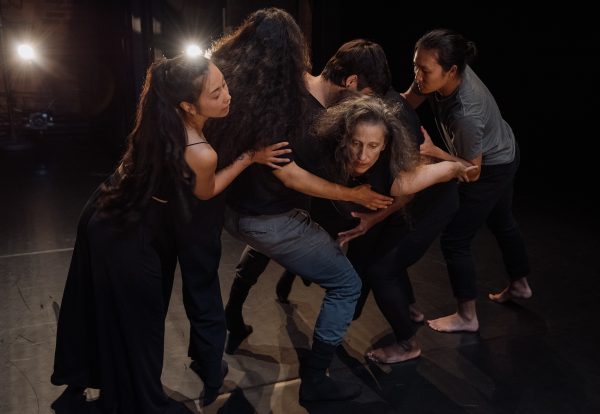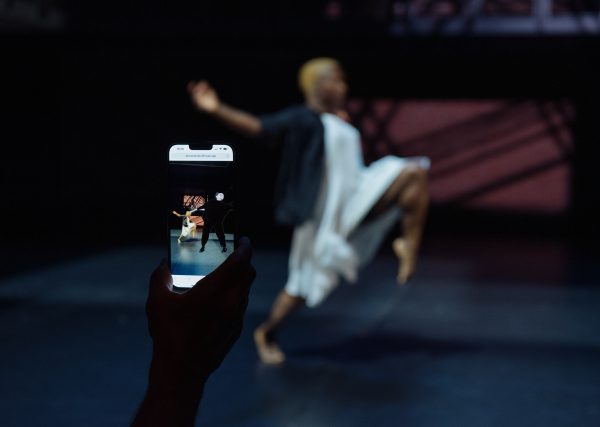One of the most important components to any story is the medium through which it’s told. Throughout human history, a common form of storytelling has been dance, which gives us the ability to translate our thoughts and words into physical movements.
Two creators renowned for their expression in dance are Karen and Allen Kaeja. In celebration of the 31stanniversary of their company, Kaeja d’Dance, Karen and Allen will debut two new performances at Habourfront Centre from November 11th to 13th, 2022, as part of the international contemporary dance series, Torque.
Karen’s piece, TouchX, examines the lasting effects of both wanted and unwanted physical touch, contrasted with moments where we’ve been emotionally touched. Allen’s piece, I am the Child of, encourages us to consider how life-changing experiences from our past and our ancestors’ pasts affect us in the present.
In reflecting on the creation of their performances, Karen and Allen shared their thoughts on how ideas can be transformed into movement, using dance as a universal language to tell the stories of our lives. They also touched upon the role of artists in pushing the boundaries of contemporary dance and the importance of allowing ourselves to feel joy, even in the wake of sadness.
From the Mind to the Stage
For artists like Karen and Allen, bringing ideas to life as movement is an ongoing and collaborative process.
The choreography of TouchX invites dancers to enter and exit scenes and make choices from a set of movements at their own comfort. This allows dancers to give and take away their consent regarding touching others and being touched while still delivering on Karen’s vision for each scene. With this structure, dancers are given the opportunity to feel out the story for themselves and decide which moves resonate with them. Not only does this allow the dancers to be personally involved in the choreography, it means no two performances will appear exactly the same.

I am the Child of is Allen’s response to the question of how do we dance with our own stories and each other’s stories. Early in the piece’s development, Allen met with several dancers and asked them to think of one life-changing moment they’d be comfortable having translated into a physical performance. These stories ranged from moments of overwhelming pride to recollections of deep generational trauma.
During this process, Allen explained that he never expected his performers to fully understand his life experiences, nor did he expect to understand theirs. Instead of just saying “I understand,” the path to choreographing was about listening, melding, and feeling compassion.

In both pieces, the creative process of bringing an idea from the mind to the stage is highly focused on individual feelings and levels of comfort. Choreographic decisions involve the input of the dancers in terms of how the movements make them feel. By creating this kind of environment in the studio, Karen and Allen can be sure their final pieces respectfully embody the stories they want to tell without sacrificing the needs of their dancers.
Dance as a Universal Language
One of the most powerful aspects of dance is that it can transcend the limitations of languages. “When I discovered dance,” said Allen, “I realized I can speak a thousand languages. I can go anywhere in the world and I can communicate, because dance is universal.”
Dance is a highly inclusive form of storytelling because it can combine multiple lives into one performance. I am the Child of, for example, bridges connections between profoundly personal experiences. Although the context of these experiences may differ completely from one another, the dancers can still empathize with who each story belongs to.
“As artists,” explained Allen, “We have the ability to receive, to respect, and to respond.” This removes the pressure of trying to fully understand or relate to a story and instead encourages us simply to listen. Once translated into movement, the physicality of dance allows for endless interpretation of these stories, regardless of our particular culture and history.
Everyone can engage with dance, whether they choose to perform or just observe. “In our minds, everyone’s a dancer,” said Allen. “It’s about what you perceive as dance that matters.”
Pushing Boundaries in Contemporary Dance
It’s quite natural for humans to shy away from things that challenge what we already know. This also happens in the arts, including dance.
“We’re not in this world to satisfy anything except for our own passion and fascination with life and art and examining humanity from how many different perspectives,” said Allen.
In I am the Child of, Allen will ask the audience to view the live performance from different perspectives as he combines real-time dance with augmented reality. He will push boundaries by encouraging audience members to use their mobile devices—which is normally discouraged during a show—to interact with the piece.

This additional layer of selective participation means that not every audience member will experience I am the Child of the same way, nor will one person have the same experience if they use their device for one viewing and then don’t another time.
It can take a while for changes to settle with the public. What may seem bizarre and unconventional today could become the norm in a few short decades. There’s no limit to the challenges artists can present to the status quo, but it all leads to fresh new ways to tell stories through dance.
Contrasting Emotions in Dance and Life
Dance has the power to remind us that in life, happiness doesn’t have to end with tragedy.
Part of the inspiration for I am the Child of came from the life of Allen’s father. During the Holocaust, Allen’s father was forced to live in a concentration camp. In this period of immense pain and darkness, the only way to survive each day was through humour and joy. Years later, his father still struggled with the past, but Allen remembered he would always find ways to make himself and others smile.
“There may be pain and sorrow and trauma and tragedy,” said Allen, “but there’s also joy and light and love.” If we only have the opportunity to move through life once, we have to take advantage of any moments where we can let the light in.
Allen’s father’s story shows happiness can exist before, during, and after pain. In his performance, Allen encourages his dancers to find their own balance between these emotions, giving them room to feel whatever the material brings out of them.
For Karen, it was precisely the opposing meanings of touch and the contrasting emotions that she had been exploring for seven years that inspired her work: “What I’ve been through as a child, my appreciation and de-appreciation of touch, and the exploration of it with both company dancers and community dancers… and in terms of the juxtaposition of what has touched them in their lives, has inspired them, has moved them, juxtaposed against the fragility, the vulnerability of touch itself.”
Telling Our Stories
By translating stories into the physical form of dance, Karen and Allen show that we can merge multiple emotions and experiences into one performance as a way to acknowledge and honour them all.
The flexible nature of the visual, aural, and choreographic components of dance dramatically opens up the possibilities of interpretation. And by pushing boundaries—by allowing a dance to change, or by changing how we present that dance, we can change how we show our stories.
For tickets to the Kaeja d’Dance 31st anniversary show, which will premiere TouchX and I’m the Child of, visit www.kaeja.org/k31.

We manage all data submitted as outlined in our privacy policy.